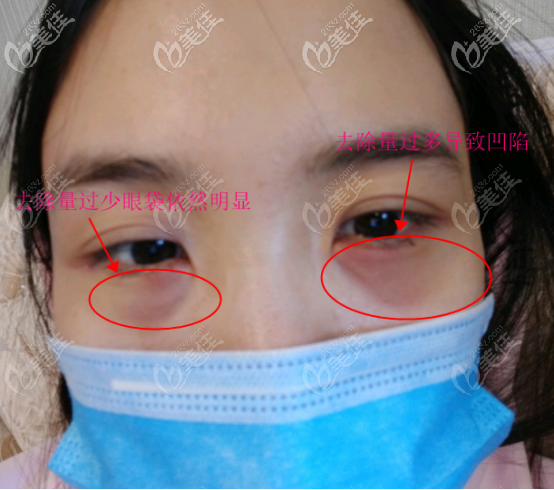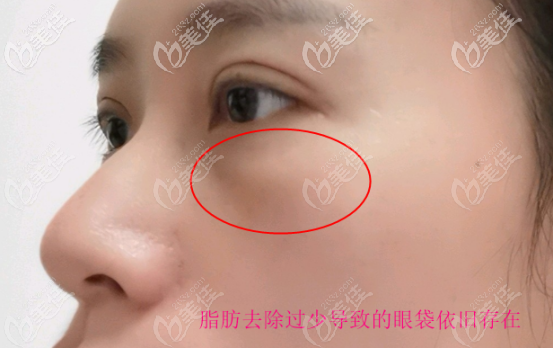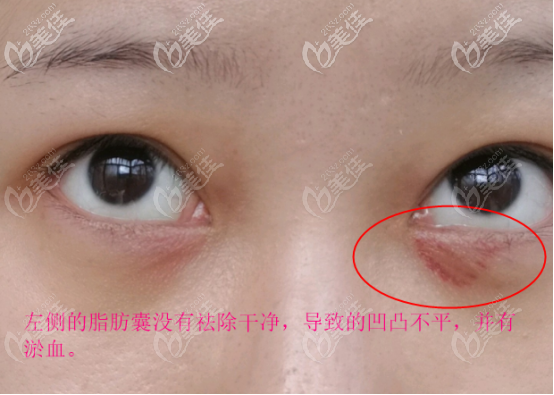The risk of our pouch is what we expect. Let's talk about what will happen. Only by understanding risks can we better avoid tragedies.
One of the risks of removing the pouch is that the pouch is still concave or still exists after the surgery, because the doctor does not control the amount of removal

The lower eyelid is the main area of pouch removal. The subcutaneous tissue of the lower eyelid is loose, the connective tissue and adipose tissue are relatively small, the strength connecting the skin and muscle is weak, and the blood circulation of the lower eyelid is rich.

To sum up, when the eye corner is stimulated by anesthetic, it is easy to be damaged, and then it will immediately swell. At this time, it is difficult for doctors to determine the amount of orbital septal fat to be removed. Conservative doctors will cut less, so there will be no effect. Eye bags still exist.

It is common for inexperienced doctors to remove too much frame fat, which will lead to lower orbital depression. The solution to excessive resection is to fill fat, and the solution to excessive resection is to resect twice.

The second risk of pouch removal is uneven, because doctors do not accurately cut three groups of fat sacs
The lower eyelid has three fat sacs. The doctor needs to treat the three groups of fat sacs respectively according to the condition of the patient's eye bags. Remove the excessive fat sacs and remove the less fat sacs.
However, it is necessary to ensure that the three groups of fat sacs remain flat, so as to ensure the effect of pouch incision. If the three groups of fat sacs are different in size, it will lead to poor or ineffective cutting.

To sum up the above two points, the risk of pouch removal is a disaster for doctors, so doctors must carry their own pots, so what we can do is to find an experienced and technically reliable doctor.










